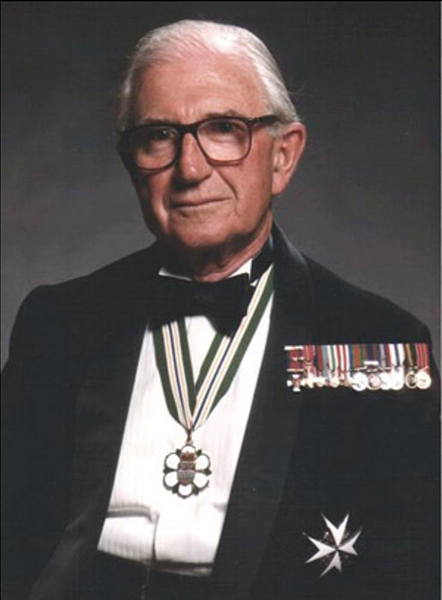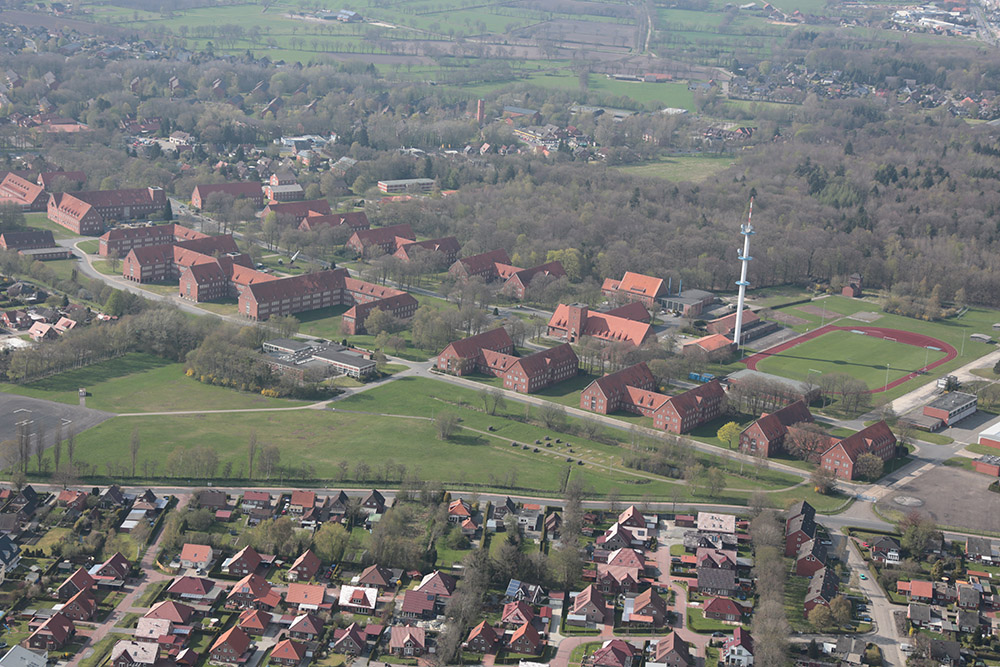Bell-Irving, Henry Pybus "Budge"
- Date of birth:
- January 21st, 1913 (Vancouver/British Columbia, Canada)
- Date of death:
- September 21st, 2002 (Canada)
- Nationality:
- Canadian
Biography
Born to a distinguished naval family, Bell-Irving joined the Seaforth Highlanders in the 1930s and left university to serve overseas in 1939. He earned the Distinguished Service Order for bravery in Sicily and rose to second-in-command of his battalion.
In 1943, he trained in England and returned to Italy as lieutenant-colonel, leading the Loyal Edmonton Regiment through the Gothic Line offensive. He later rejoined the Seaforths and helped liberate the Netherlands, earning a D.S.O. Bar for his leadership.
Promoted to brigadier in May 1945, Bell-Irving was a judge in the Kurt Meyer's trial.
Decades later, he was appointed Lieutenant-Governor of British Columbia (1978–1983) and received the Order of Canada in 1984.
Do you have more information about this person? Inform us!
- Period:
- Second World War (1939-1945)
- Rank:
- Major
- Unit:
- A Company, 1st Battalion, The Seaforth Highlanders of Canada, 2nd Canadian Infantry Brigade, 1st Canadian Infantry Division, Canadian Army
- Awarded on:
- September 36th, 1943
In the attack of the Seaforth of Canada of Agira (Sicily), 28 July 1943, Major Bell-Irving, Officer Commanding ?A? Company was ordered to ain and hold the sharp ridge on the right which was held by the enemy in strength.
This operation entailed a most difficult ascent of a precipitous feature under direct fire from enemy machine guns. During the approach to the feature ?A? Company came under heavy fire from two hidden enemy tanks. Major Bell-Irving, despite the heavy enemy fire and the resultant casualties, attacked and routed the tanks. He continued the advance, positioning himself in the forefront at all times and under his hold leadership ?A? Company stormed the hill, gained a foothold, and held the feature in spite of repeated counter attacks and heavy enemy machine gun fire. This courage and determination with which this officer pressed forward completely disregarding his own safety was in inspiration and contributed to the success of the battalion attack.
- Period:
- Second World War (1939-1945)
- Rank:
- Lieutenant-Colonel
- Unit:
- The Seaforth Highlanders of Canada, 2nd Canadian Infantry Brigade, 1st Canadian Infantry Division, Canadian Army
- Awarded on:
- June 30th, 1945
"On 11 April 1945, 2 Canadian Infantry Brigade made an assault crossing of the River IJssel in the area MR 9301. The Seaforth Highlanders of Canada, commanded by Lieutenant-Colonel Henry Pybus Bell-Irving, DSO, were left forward battalion during this assault.
Lieutenant-Colonel Bell-Irving appreciated that the very wide river obstacle would make control difficult once the first troops had crossed. He, therefore, sited his Headquarters far forward initially, and moved it across early in the operation. Though thus exposed personally to very heavy shelling, and at times to small arms fire, his presence and coolness were a great influence on the battle at this stage, and under his firm direction the initial bridgehead was soon secure. On several occasions his sound judgement and quick decisions sent companies to localities at just the right time to catch the enemy off balance, resulting in a series of decisive engagements and a large number of prisoners.
During the phase of enlargement of the bridgehead, which involved driving the enemy from a dyke bank and a belt of woods, Lieutenant-Colonel Bell-Irving again displayed to a marked degree his powers of command and leadership.
The enemy were well dug in and small arms and shell-fire was intense, nevertheless Lieutenant-Colonel Bell-Irving visited all his companies to encourage and supervise them in their actions. As a result, he was able personally to co-ordinate the timing of a series of company attacks, which with his very skillful handling of supporting fire, soon dislodged the enemy from this strong defensive belt.
The battalion's success in this action, during which the river line was completely smashed, a large quantity of enemy equipment destroyed, some 200 prisoners captured and approximately 80 killed, was due very largely to the fearlessness and leadership of Lieutenant-Colonel Bell-Irving. His bearing and conduct in battle, and his handling of the battalion, ensured success and are worthy of the highest praise."
This award was obtained in the form of an Bar to be attached on the ribbon of the first award.
- Period:
- Second World War (1939-1945)
- Rank:
- Lieutenant-Colonel
- Unit:
- The Seaforth Highlanders of Canada, 2nd Canadian Infantry Brigade, 1st Canadian Infantry Division, Canadian Army
- Awarded on:
- July 7th, 1945
- Period:
- Second World War (1939-1945)
- Rank:
- Lieutenant-Colonel
- Awarded on:
- November 3rd, 1945
- Period:
- Second World War (1939-1945)
- Rank:
- Lieutenant-Colonel
- Awarded on:
- March 9th, 1946
- Awarded on:
- December 17th, 1984
- Awarded on:
- 1986
- Awarded on:
- 1990
- Period:
- Second World War (1939-1945)
- Period:
- Second World War (1939-1945)
- Period:
- Second World War (1939-1945)
- Period:
- Second World War (1939-1945)
- Period:
- Second World War (1939-1945)
- Period:
- Second World War (1939-1945)

















